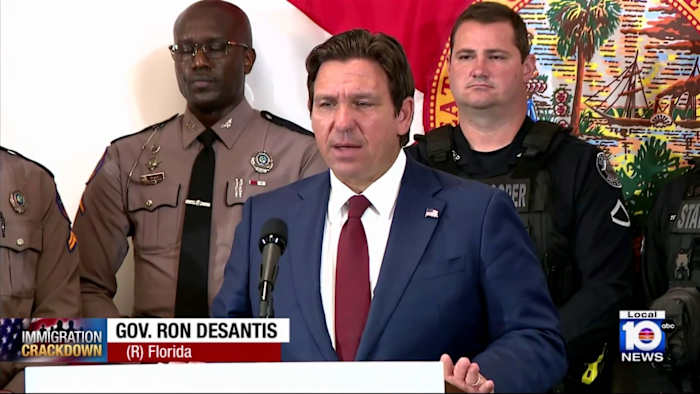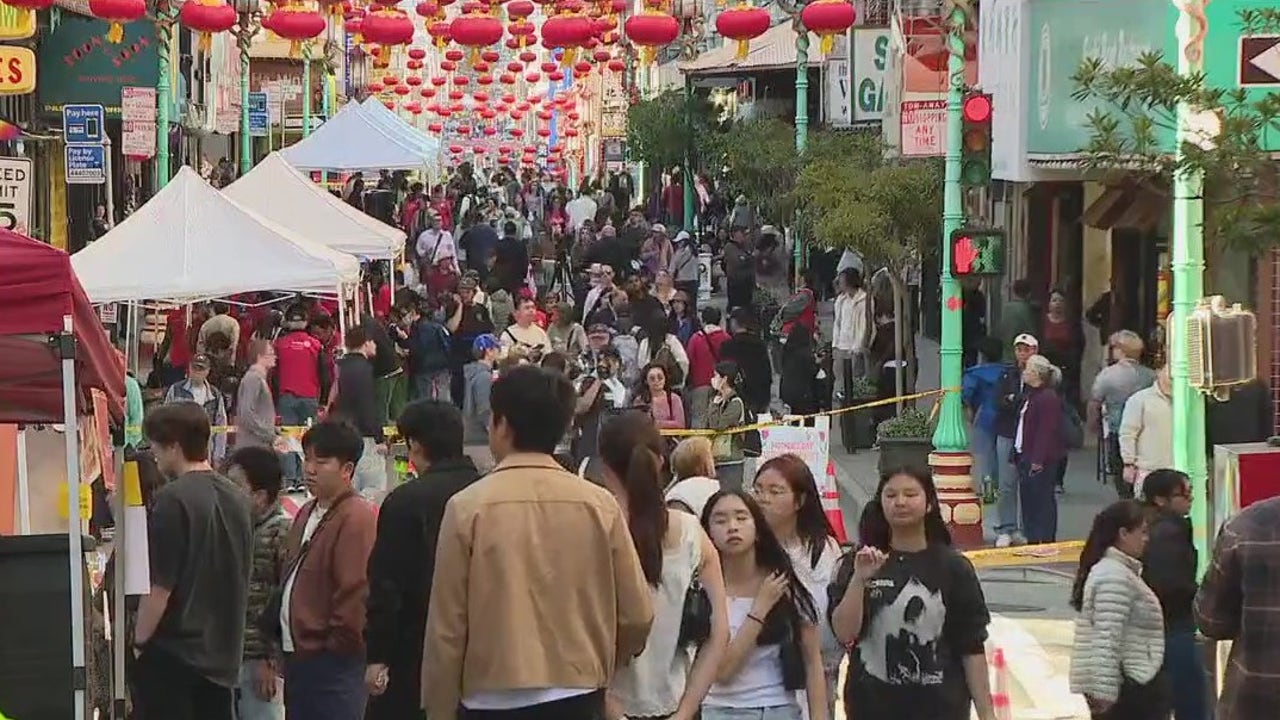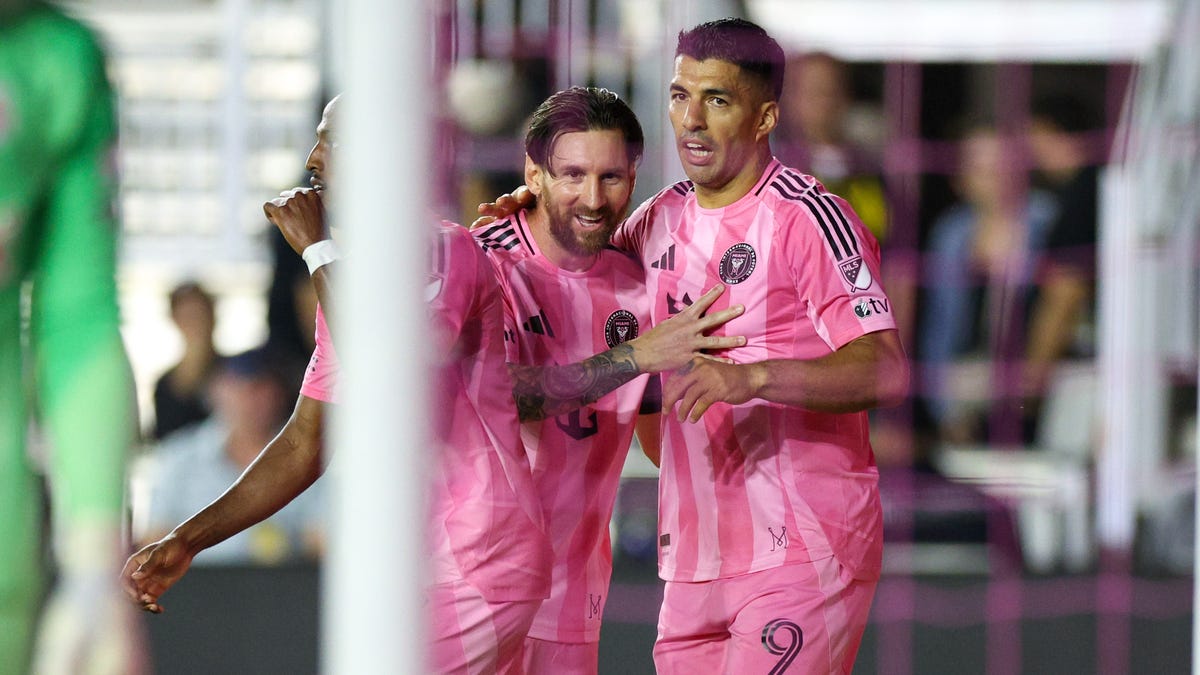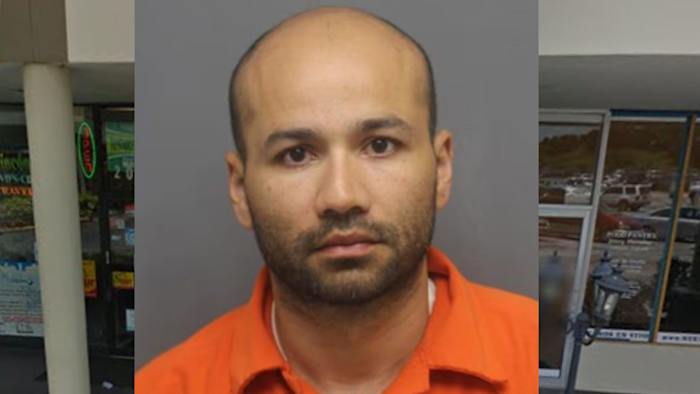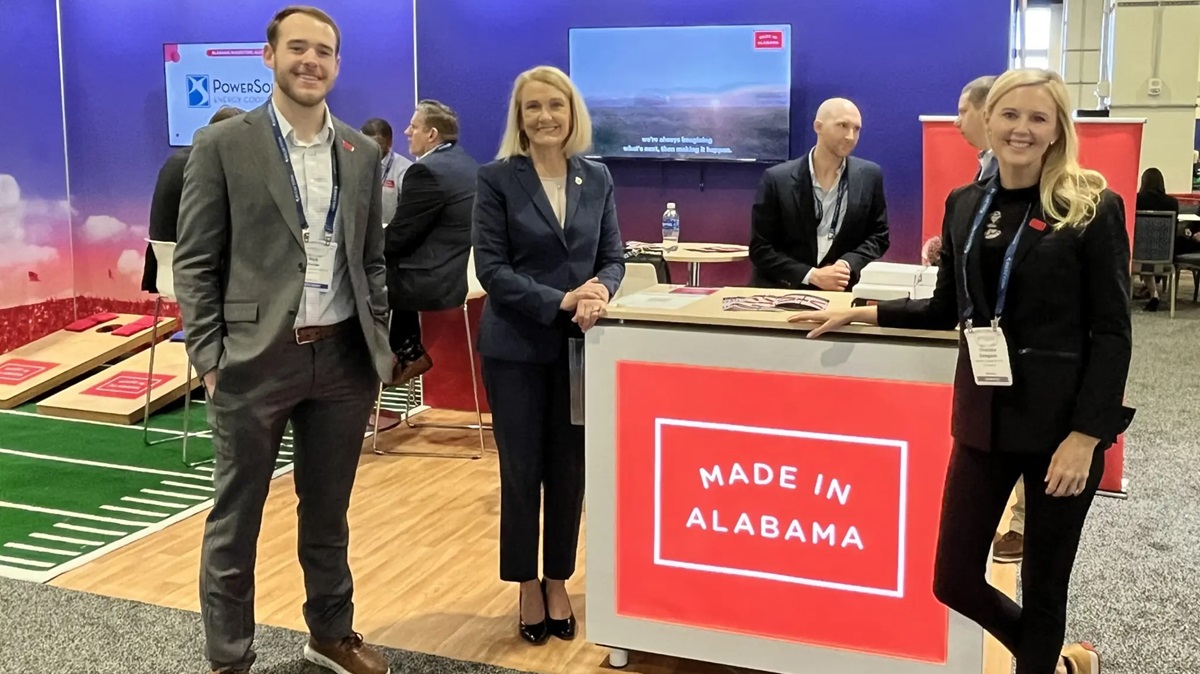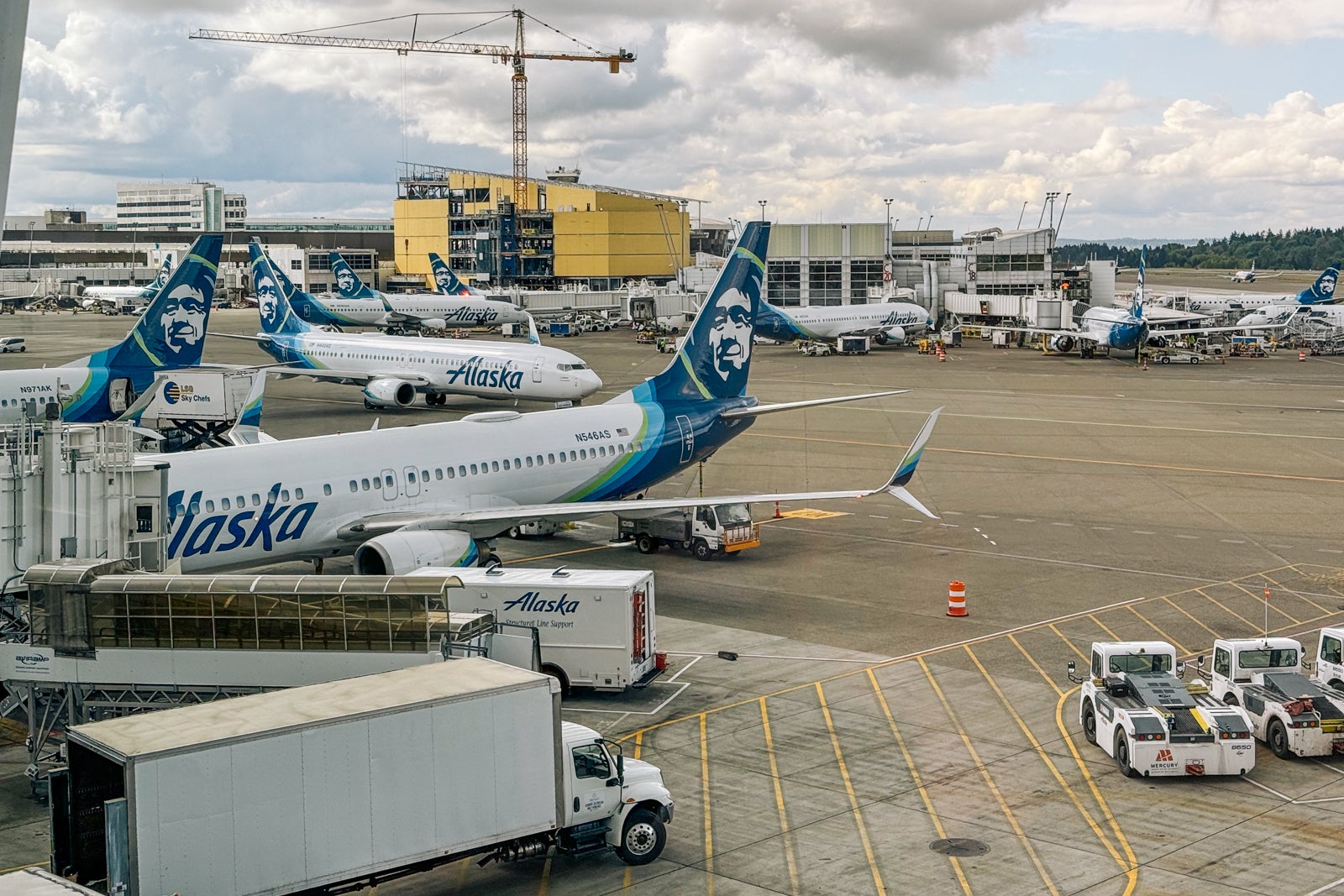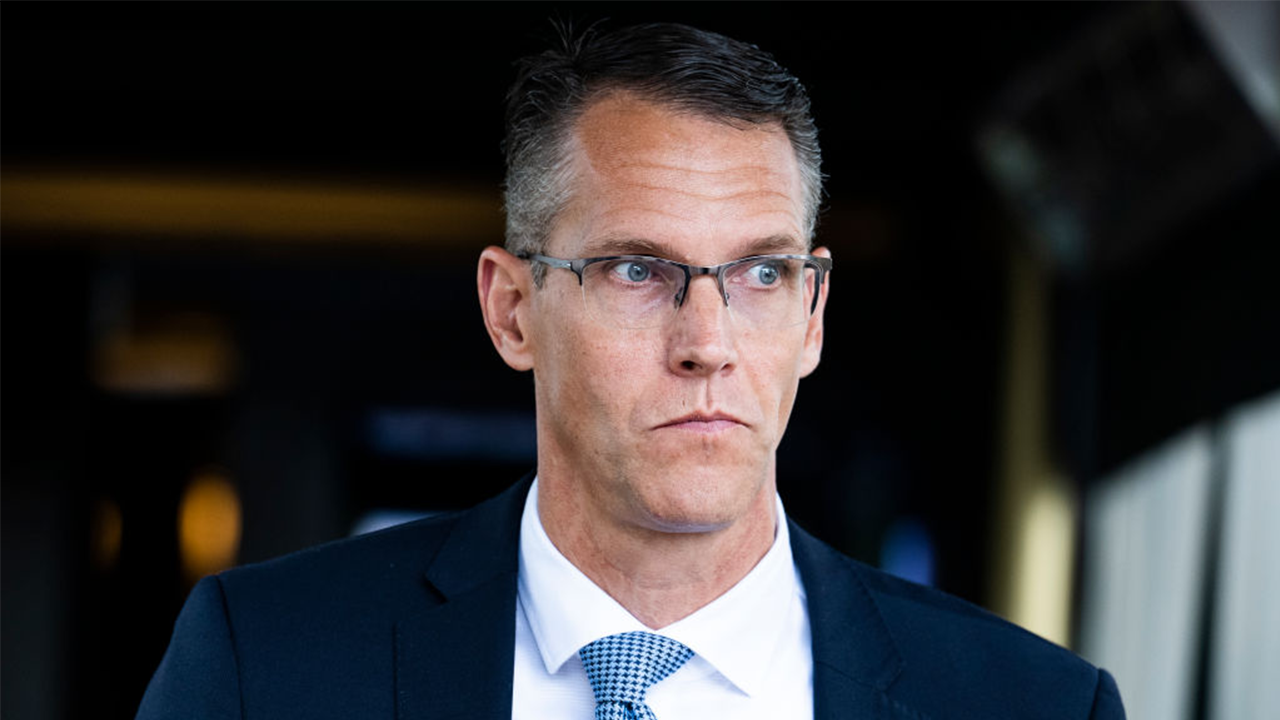- Mascherano said team has lost ‘solidarity’
- Used sarcasm to describe team situation
- Suarez remains out for Miami
Miami, FL
Is Florida’s Brightline the train of the future?

Sometime this fall, a first-of-its-kind train will depart Southern Florida for a “magical” destination 236 miles north.
Known as the Brightline, this privately-built, for-profit rail company will soon cut the ribbon on a 170-mile extension connecting the likes of Miami, Fort Lauderdale, and West Palm Beach with Orlando International Airport.
Just beyond are many of America’s best-known theme parks, including Universal Studios Florida and Walt Disney World.
Nearly nine years after construction began — and just four years after work on the higher-speed section to Orlando got underway — the $6.2 billion project has the potential to not just transform transportation in Florida, but in heavily-trafficked inter-urban corridors nationwide.
At top speeds of 125 miles per hour, Brightline passengers departing Orlando will reach downtown Miami in just under three hours. It’s a faster and far more comfortable upgrade to existing transport options: A drive along the oft-congested highways between the two cities, or the five- to eight-hour trip riding Amtrak.
And certainly more stylish: Brightline’s sleek black, white, and bright yellow trains are equipped with SpaceX Starlink Internet and leather seats; there’s even a business class-style lounge for passengers who purchase a “premium” ticket.
Brightline plans to operate 16 daily round trips between Orlando and Miami, with one-way rides starting at $79, comparable to prices on Amtrak or Spirit Airlines.
Built by Sacramento-based Siemens Mobility, the lower-emission diesel-electric locomotives have already run between Miami and West Palm Beach for several years.

But this second-phase extension northward to Orlando will be the real test of Brightline’s change-making capacity when it opens in the coming weeks.
Once that happens, Florida leaders expect Brightline — which already carried close to 1 million passengers during the first half of this year in South Florida — to serve 4.3 million annual “long-distance” riders between Orlando and Miami, while injecting more than $6 billion into the state’s economy as it more closely links the Magic Kingdom with South Beach.
Brightline is the first privately-owned intercity rail system in the US. And its development, says CEO Mike Reininger, demonstrates the impact similar major infrastructure developments could achieve nationwide.
“Seeing is believing,” says Reininger, who notes that multiple other cities have already reached out to Brightline for potential service lines.

In many ways, Brightline offers the first evidence that train travel in America might someday resemble the ease and efficiency of railways in Europe and Asia.
To be clear, Brightline isn’t done.
The company plans to build on its service to Orlando with a future extension to Tampa 85 miles further west.
Plus, company leaders tell The Post they’ll have shovels in the ground by year’s end on an entirely new Brightline West high-speed rail system connecting Southern California with Las Vegas.

And that may just be the beginning.
In an interview with The Post, Reininger teased the possibility of future, similar systems, noting the company has identified “a dozen or so” places elsewhere in the country that might be a fit.
“We really do think, for certain parts of . . . the country, we have now developed a blueprint and a theory about a way to get it done in a meaningful time frame and in a way that is economic,” he said. Exactly what is that blueprint?
For starters, Brightline’s Florida system sits in a densely populated, fast-growing state in perhaps the nation’s highest-demand tourism region.
Last year saw 72 million visitors descend upon Orlando and over 50 million to Miami.
These two cities are emblematic of the self-described “sweet spot” for rail: too close to fly, but far enough to make travelers think twice about driving; roughly 200 to 300 miles apart.
Perhaps more important, though, was Brightline’s ability to skirt the red tape and court battles that typically accompany mega transport projects by using or building tracks in strategic locations; company executives studied past, failed rail projects and found getting track space (known as a “right of way”) is often the biggest hurdle.
Brightline relied on existing tracks for large portions of its Florida line — tracks it has access to since its parent company, private equity-giant Fortress Investment Group, also owned the tracks’ original user: Florida East Coast Railway.
In other places, Brightline’s tracks run down the median of interstate highways, which were completed decades ago.
“This relieved [Brightline] of a lot of initial real-estate costs,” said rail expert Christopher P.L. Barkan, a professor who leads the University of Illinois at Urbana-Champaign’s Rail Transportation and Engineering Center.

Using existing track also allowed Brightline to dramatically ease its battle for construction permitting, company executives tell The Post.
Brighltine avoided knocking down forests or going through the legal maneuvers required to build new tracks through private property.
Unsurprisingly, Brightline is taking a similar development approach out west, where it plans to run its trains along the Interstate 5 corridor that connects Los Angeles and Las Vegas.
To sum it up in a football metaphor, Brightline started in a good field position.
Its leaders acknowledge this. “Those starting characteristics are why we’ve been able to do what we’ve been able to do,” Reininger said of the company’s development strategies.
That success, however, hasn’t been without setbacks — some sizable.

Last year, boaters protested in Stuart, Fla., to demand more time to pass through the St. Lucie River Railway Bridge.
Far more worrisome is Brightline’s already alarming fatality rate: Since its initial debut in 2017, some 30 motorists and pediatricians have been killed by Brightline trains.
The majority have been people struck by trains while walking on tracks; Brightline has repeatedly acknowledged the situation and announced a $45 million safety plan featuring “at least 33 miles of pedestrian safety measures”…along with “crucial safety improvements” at 156 railroad crossings.”
For all Brightline’s successes, the unique circumstances around its private money/private rail development means it may not be a fit everywhere, experts caution.
“Brightline has a lot of built-in advantages that not every project . . . is going to have,” Jim Mathews, president and CEO of the Rail Passengers Association, pointed out. “There are places in this country where that model can — and will — work. But there’s also plenty of places where it can’t.” Potential rail projects, he explains, should to be tailored to a region’s specific circumstances rather than conform to a set corporate “blueprint.”

For that reason, Mathews cautions against viewing Brightline’s rising prominence as a rebuke of Amtrak, even as the federally-funded rail system has drawn ire from lawmakers and passengers for its budget and service. Despite nearly $50 billion in federal subsidies in as many years, “Amtrak has never made a profit,” Rep. Troy Nehls (R-Texas) remarked during a June Congressional hearing with Amtrak executives.
Such is the reality, Mathews says, for a rail company, like Amtrak, that’s required to deliver crucial service to even less profitable, hard-to-reach parts of the country on tracks that, outside its critical Northeast Corridor, are predominantly owned by (and therefore shared with) freight railroads.
“Amtrak can’t be Brightline anymore than Brightline can be like Amtrak,” he said.

Clearly, though, Brightline’s appearance on both coasts has demonstrated an appetite for alternative intercity passenger rail options, including those built with private funding.
Brightline also arrives on the precipice of even larger change for trains in America, with the 2021 bipartisan infrastructure law having allocated tens of billions of dollars for rail projects nationwide.
This includes more money for Amtrak than it had previously received in its entire existence, along with a new rail tunnel under the Hudson River.
Even private companies like Brightline hope to benefit from the massive Federal money pot — the Nevada Department of Transportation has partnered with the company in applying for a reported $3.75 billion to support construction on Brightline’s western line.


“I think we’re going to end up seeing a mix of both private and public sector operations of passenger railroad in the future,” said Barkan, whose research team has previously studied high-speed rail service between Chicago and St. Louis.
Some of his former students have gone on to take jobs at Brightline.
Of course, despite Brightline’s success, investors eyeing future rail projects will likely consider the fate of California’s long-delayed Bullet Train that’s planned between San Francisco and Los Angeles.

Since California voters first authorized a $9 billion down payment in 2008, project costs have ballooned to as high as $100 billion, but the system currently has only 119 miles of rail under construction.
It’s blunders like the Bullet Train that help put into perspective the significance of Brightline. “There’s been a lot of cooperation in terms of enabling them to get here,” Orlando Mayor Buddy Dyer told The Post, acknowledging the joint efforts between Brightline and public officials required to prevent potential regulatory derailments along the way.
“That is something that has curtailed efforts in some other parts of the country — getting tied up in litigation and not having your financing in place,” Dyer added (Miami Mayor Francis Suarez has been equally supportive of Brightline).

In Orlando’s case, city officials helped smooth out Brightline’s acquisition of land controlled by the Central Florida Expressway and the Orlando Airport. Dyer hopes Brightline will get the green light to operate its Orlando extension by Sept. 24, when the city’s MLS team hosts Intercity Miami and its new superstar Lionel Messi.
Brightline, meanwhile, has its eyes on another far larger sporting event: the 2028 Olympics in Los Angeles.
By then, it hopes to have its Western system complete.
If achieved, it could make the global event one that could simultaneously showcase the prowess of American athletes and an improving US rail system.
“The main thing is to get Americans to recognize the value of getting out of their car and getting onto their train,” Mathews said. “And increasingly, they do.”

Miami, FL
‘Not going to be a hypocrite’ – Inter Miami manager Javier Mescherano refuses to ‘say everything is fine’ as Lionel Messi and slumping squad fall to sixth place | Goal.com US
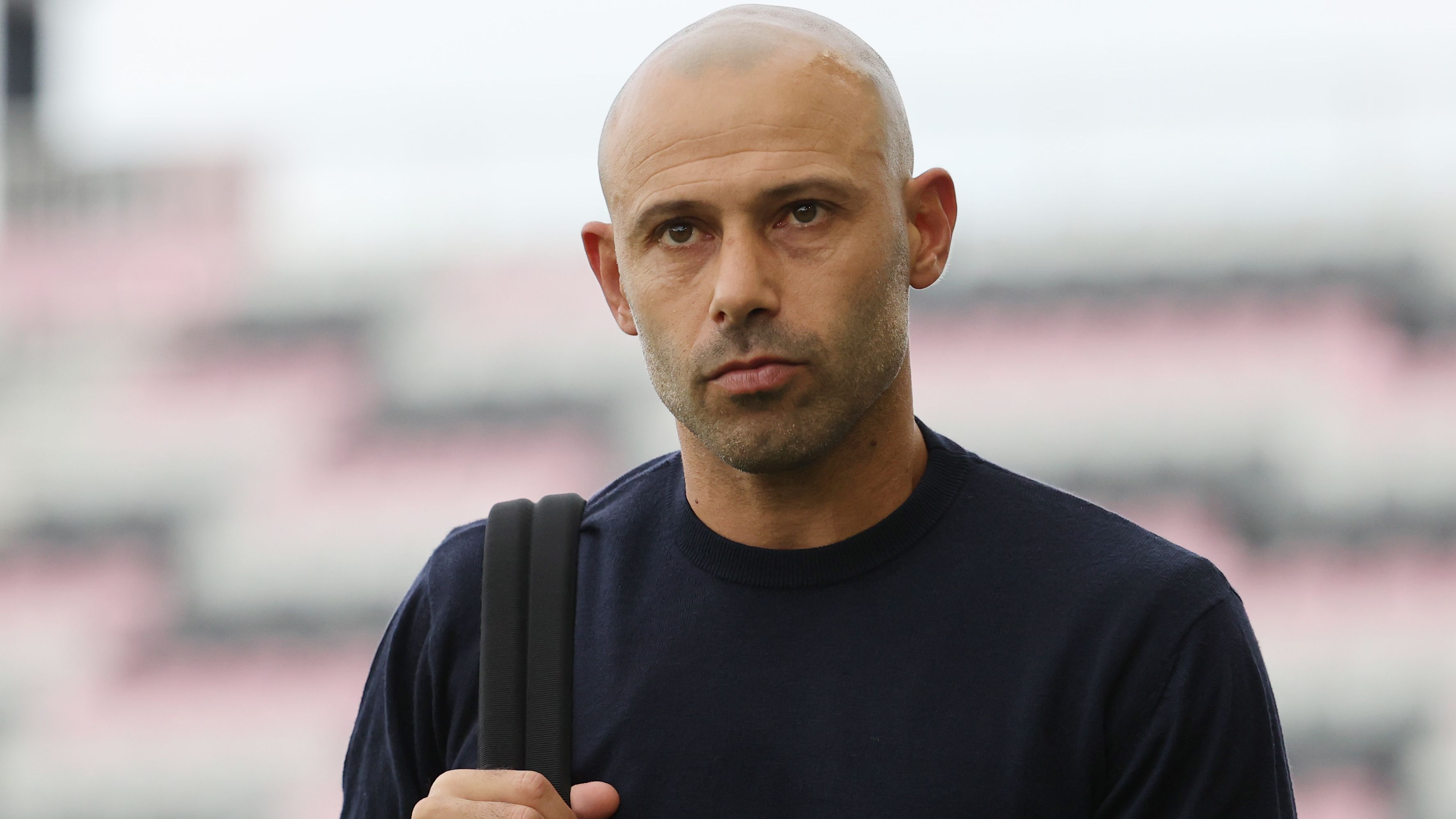
Miami, FL
‘Show a little respect,’ Beckham tells Minnesota

Inter Miami co-owner David Beckham called on Minnesota United to “show a little respect” after a series of Instagram posts following Miami’s humbling 4-1 MLS defeat on Saturday.
Lionel Messi got on the scoresheet for the visitors at St. Paul but Minnesota (6-2-4, 22 points) handed Miami (6-2-3, 21 points) its heaviest loss in a game the Argentina legend has played.
Afterwards, Minnesota irked Beckham with a number of Instagram posts, prompting the former Manchester United, Real Madrid and LA Galaxy midfielder into the comments section.
First, Beckham took exception to one that was was captioned “Pink Phony Club” — alluding to Miami’s kit colour and the song “Pink Pony Club” by Chappell Roan.
“Show a little respect, be elegant in triumph,” Beckham posted.
Minnesota then posted a picture of a banner from the game that read: “History over hype, culture over cash.” The words “hype and cash” were highlighted in pink.
Beckham, who launched Inter Miami in 2018, commented on the post: “Respect over everything.”
Bongokuhle Hlongwane, Anthony Markanich and Robin Lod all got on the scoresheet for Minnesota on Saturday, while Marcelo Weigandt put into his own net.
Miami’s only other defeat this season came at the hands of FC Dallas. Miami next travels to face San Jose Earthquakes on Wednesday, when striker Luis Suárez could return to the lineup.
Miami, FL
University of Miami linebacker involved in car crash that killed 2 kids
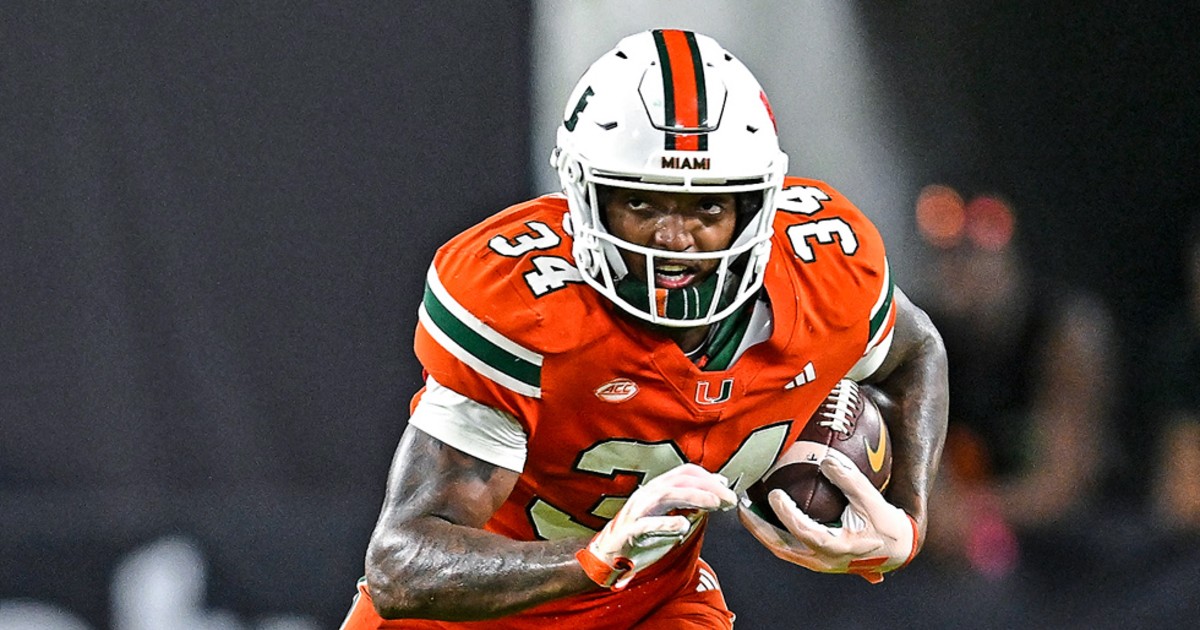
Adarius Hayes, a University of Miami linebacker, was involved in a fatal crash that killed a 10-year-old and 4-year-old in Hayes’ hometown of Largo, Florida.
The crash occurred at 1:45 p.m. on Saturday when it appears a Dodge Durango collided with a Kia Soul while the Soul was making a left turn, according to the Largo Police Department. A police spokeswoman confirmed to NBC News that Hayes was involved in the crash.
Two children — 10-year-old Jabari Elijah Solomon and 4-year-old Charlie Herbert Solomon Riveria — were killed in the crash.
Police said several others were taken to the hospital with “serious” injuries. It does not appear that alcohol was a factor in the crash, according to police.
“This is an ongoing and active investigation, and no further information is available for release at this time,” police said.
Hayes was also injured in the accident, NBC South Florida reported Sunday.
Representatives for the University of Miami’s athletics department did not immediately respond to an inquiry about Hayes’ condition. The University of Miami’s spring semester ended on Wednesday following the last day of final exams.
Hayes played in 12 games for the university as a freshman last year and was described as a “key factor” on special teams on his team profile page. He had four tackles and one interception in first season as a freshman on the team.
According to his profile, he saw time on the field in the Pop-Tarts Bowl in September. The University of Miami lost by one point against Iowa State in a 42-41 nail-biter game.
Hayes played for Largo High School prior to attending the University of Miami. He was considered a “four-star prospect” and one of the nation’s top-ranked linebackers, Hayes’ university profile said.
-

 News1 week ago
News1 week agoFamily statement: Rodney Hinton Jr. walked out of body camera footage meeting with CPD prior to officer death
-

 Austin, TX3 days ago
Austin, TX3 days agoBest Austin Salads – 15 Food Places For Good Greens!
-
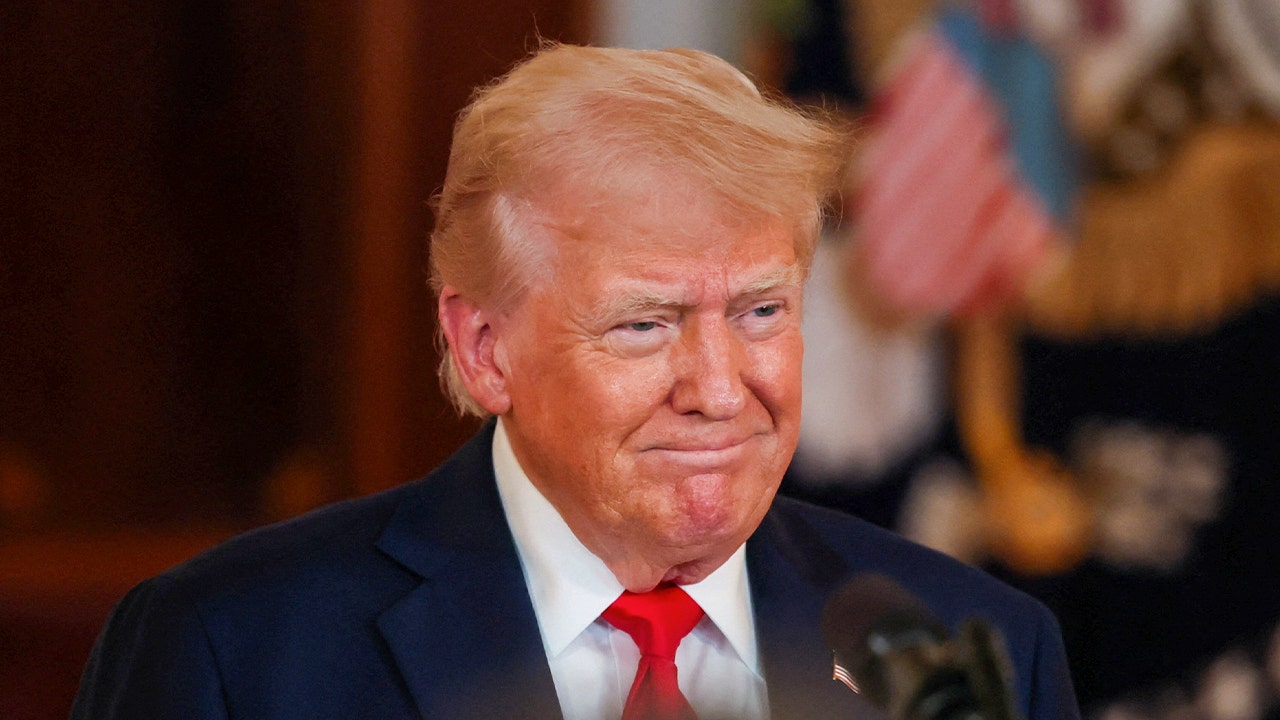
 Politics1 week ago
Politics1 week agoTrump posts AI image of himself as Pope amid Vatican's search for new pontiff
-

 Education1 week ago
Education1 week agoIn Alabama Commencement Speech, Trump Mixes In the Political
-

 Technology7 days ago
Technology7 days agoBe careful what you read about an Elden Ring movie
-

 Culture1 week ago
Culture1 week agoPulitzer Prizes 2025: A Guide to the Winning Books and Finalists
-

 News1 week ago
News1 week agoFather Whose Son Was Shot by Cincinnati Police Hits Deputy With Car, Killing Him
-
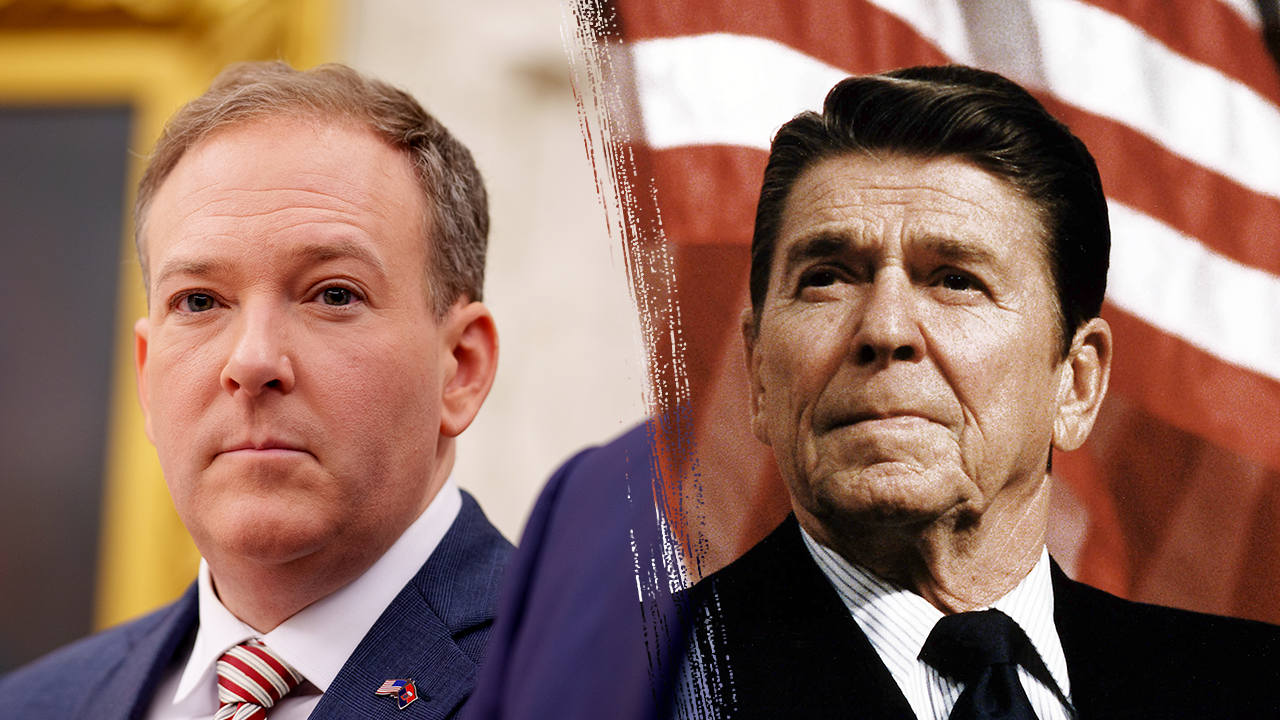
 Politics1 week ago
Politics1 week agoEPA chief Zeldin announces overhauls to bring agency back to Reagan-level staffing
